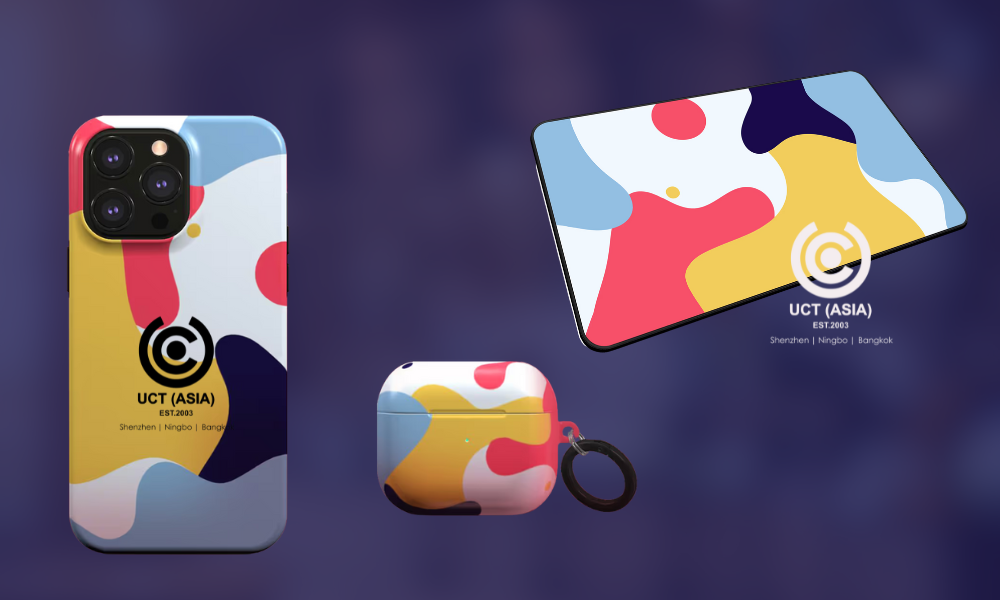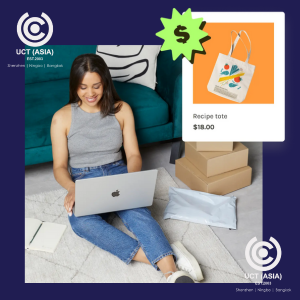
Why this matters now
With the creator economy expanding rapidly, the shift from content creation to tangible commerce has become both inevitable and strategic. Analysts estimate the influencer marketing industry will reach between 22 billion to 33 billion USD in 2025, with merchandise emerging as one of the strongest monetization models.
This article explores how influencers and brands can turn followers into real customers through custom merchandise and custom promo products, creating scalable business models with partners like UCT (Asia) that specialize in bringing creative product ideas to life.
1. Build the Community Before You Drop a Hoodie
Why it works
- The most successful merchandise launches happen when the audience already feels connected to the creator.
- Followers who trust, enjoy, or learn from the influencer are far more likely to see a product as a symbol of belonging rather than just apparel.
- Many creators earn only a fraction of income from platform ads, so they need diversified revenue streams including commerce.
What to do
- Invest time into community: reply to comments, host live sessions, and share behind-the-scenes content.
- Reinforce your identity and values so the audience feels emotionally linked to your brand.
- Avoid rushing a merch drop. Trust and affinity build long-term success.
Key takeaway: Without an invested community, merchandise will struggle to gain traction.

2. Listen to Your Audience: What Do They Actually Want?
Why it matters
Turning engagement into sales requires understanding what your audience truly connects with. The catchphrase, the inside joke, or the recurring pet cameo can all inspire strong product designs. Influencers who embed familiarity and personality into their merchandise often see higher conversion rates.
How to do it
- Conduct polls and story surveys to ask fans what kind of items they’d wear or use.
- Review engagement data to identify recurring content themes.
- Translate top-performing content elements into product designs.
- Match product types with your niche: pet lovers might create accessories, while travelers might offer durable gear.
Tip: Prioritize insight-driven designs over generic logo placements.
3. Partner with the Right Manufacturer or Fulfillment Partner
What can go wrong
- Poor quality damages brand credibility.
- Delayed shipping frustrates loyal fans.
- In-house production without logistics support increases costs and risks.
Best practices
- Start with reliable print-on-demand or fulfillment services before committing to large inventory.
- Review samples for print quality, material feel, and packaging.
- Choose between holding stock (higher margins, more risk) or using a drop model (lower risk, scarcity effect).
- Prioritize sustainability and ethical production to reflect modern brand values.
Pro tip: Use a dedicated storefront or landing page optimized for mobile with integrated checkout and fast load time.

4. Align the Products With Your Personal Brand Story
Why this elevates merch
Merchandise that doesn’t reflect the influencer’s story often feels forced. When a product connects naturally with identity, it strengthens brand loyalty and boosts authenticity.
Implementation steps
- Define your brand narrative: adventure, wellness, creativity, humor, or activism.
- Select product categories that match your core theme.
- Integrate visual cues such as color palette and typography consistent with your brand.
- Showcase the product within your everyday content to make it feel organic.
Example: A fitness creator could release branded resistance bands, while a travel creator might focus on durable backpacks.
5. Use Scarcity and Exclusivity Strategically
Psychology in play
Limited availability creates urgency and enhances perceived value. Announcing that “only 500 pieces” exist or that “orders close Sunday” generates excitement and engagement.
How to apply
- Decide whether your model will be continuous or limited-edition drops.
- Run countdowns and pre-order campaigns to build anticipation.
- Offer early-bird perks or exclusive bundles for first buyers.
- Celebrate sell-outs publicly to reinforce community pride.
Caution: Overusing scarcity can backfire. Keep your promises consistent.
6. Create a Seamless Purchase Experience
Often overlooked but critical
An influencer can market perfectly but lose conversions if the buying process is inconvenient. A slow or confusing checkout process discourages impulse buyers.
Key focus areas
- Ensure the website is mobile-friendly and quick to load.
- Minimize the number of checkout steps.
- Display trust signals like customer reviews and transparent return policies.
- Offer various payment methods for global audiences.
- Automate post-purchase follow-up with thank-you emails and tracking updates.
Pro tip: Encourage customers to share photos of their purchases with a branded hashtag to drive organic promotion.
7. Metrics and Monetization: From Views to Real Value
What the numbers tell us
- Influencers who treat their content like a business report average annual incomes exceeding 130 thousand USD.
- Around 86 percent of consumers make at least one influencer-inspired purchase per year.
- Merch conversion rates are typically higher when paired with strong community engagement and hype cycles.
Tracking your success
- Monitor pre-launch engagement metrics like poll responses and waitlist sign-ups.
- Measure checkout and cart abandonment rates during drops.
- Track repeat purchases and social mentions post-launch.
- Calculate profit margins considering production, fulfillment, and returns.
- Use sales data to plan future designs or reorder top-selling items.
Goal: Build a consistent loop of content, engagement, drops, and feedback.
8. Avoid Pitfalls: Mistakes That Derail Merch Strategy
Common mistakes
- Launching merchandise too early in your career.
- Neglecting quality control and reliable fulfillment.
- Offering products unrelated to your brand identity.
- Overusing limited-edition hype without genuine scarcity.
- Ignoring website optimization or mobile purchasing behavior.
- Failing to communicate delays or order issues transparently.
How to mitigate
- Test small batches before scaling.
- Work with reputable sourcing and logistics partners.
- Align every product with your niche and content style.
- Build anticipation with clear timelines and realistic promises.
- Reinforce excitement post-launch through fan-generated content.
Final Thoughts
Custom merchandise allows influencers to transform digital engagement into tangible value. It is not just another income stream but an extension of personal brand identity. When creators focus on community, insight, product relevance, execution quality, and purchase experience, they convert influence into sustained business growth.
For influencers, agencies, and brands, the formula is straightforward: build your community, listen to your audience, create aligned products, ensure reliable quality, and craft a seamless shopping journey. Get these right and your brand moves confidently from views to real value.
If you are ready to turn your merchandise ideas into reality, consider collaborating with experts who can handle production and fulfillment so you can focus on what you do best — creating.

